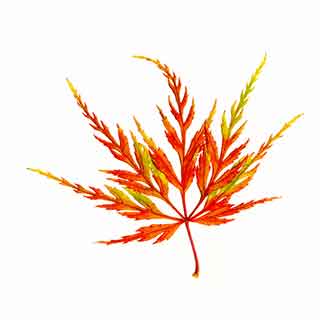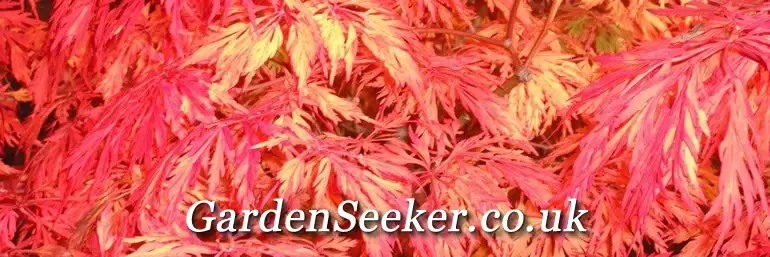
Lavandula; Laburnum; Lagerstroemia; Lantana; Laurus; Lavatera; Leptospermum; Lycesteria; Ligustrum; Lithodora; Lonicera; Lupinus:
Lavenders - Lavandula for our featured group of shrubs starting with the letter L.

Laburnum Golden Rain
Can also be called Golden Chain, is part of the Pea family. More of a small tree, but often planted in association with shrubs. It flowers spectacularly in late spring with long clusters of yellow flowers. No wonder why it is the best in the Laburnum family and has been awarded the Royal Horticultural Societys Garden Merit Award.
The Golden Rain produces fewer seeds than other varieties and they are best removed, not because they are poisonous to nature, but because by removing them you will get better flowers the following year.
Being part of the Pea family it can be trained to climb and is best displayed on an overhead trellis.
Propagate by using the hardwood method in winter.
is a member of the Lythraceae[1] family, native to India it is cultivated in the warmer climates around the world and can be found growing wild in southeast Asia, northern Australia, and parts of Oceania.
Crepe myrtles are known for their colourful and long-lasting flowers which last all summer.
Generally half hardy shrub with attractive peeling bark Coloured brown and grey. The upright panicles of pink and purple coloured flowers are superb.
The dark green leaves are bronze when young and it flowers from summer to autumn.
Lantana
is one of 150 members of the verbena family[2], it is native to the Americas and Asia.
Tender shrub - evergreen foliage and showy flowers in various colours, a mix of red, orange, yellow, or blue and white florets. The flowers typically change colour as they mature. The flowers give off a strong sweet fragrance.
It can be grown outdoors in summer in the UK and best to be planted in a frostfree area. It is a popular house plant or kept in a conservatory to protect it from the winter. It can grow between 2 ft and 6 ft tall, depending if it is potted or planted out.
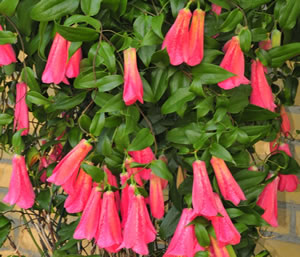
Lapageria
Lapageria or Lapageria Roses are an evergreen climbing plant which originates in Chile, it was introduced to Kew Gardens in the UK in the 1840s.
It has been recognised as the National Plant of Chile and its has achieved the Royal Horticultural Society's Award of Garden Merit.
Laurel
Laurels are a useful group of evergreen shrubs, used for screening or groundcover.
Evergreen Laurels are members of the Prunus - Cherry family - which in itself is a member of the rose genus - Rosaceae. They are not related to Laurus, even if the name is similar. Laurus is the botanical genus of the Bay Tree.
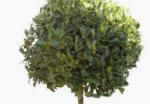
Laurus
The Latin name of the Bay Tree means esteem and noble; laurel crowns were made from bay and given to victors.
In ancient Greek it was said that keeping a bay leaf in the mouth would prevent misfortune and by Roman times is had a reputation for preventing lighting strikes - Emperors would wear laurel wreaths on their heads to protect them. The Bay Leaf plant was also said to have supernatural powers.

Lavender
A superb range of evergreen low-growing shrubs which are mainly hardy - the English types more reliably so. Flower colours range from the deep lavender blue, through pinks and white now. English and French types differ in flower and hardiness.
Lavatera Mallow
One of the longest flowering of all shrubs. Only drawback is that it gets damaged in a hard winter, and oftend splits assunder, do not worry, just cut it back hard in the spring and off it goes again.
Originated in the Mediterranean Countries the Lavatera Mallow is often known as the 'Barnsley baby'
Leptospermum
Leptospermum or the New Zealand Tea Tree is a shrub or small tree growing up to 15 meters in height, and has small, prickly leaves and pink or white flowers with five petals. Native to Australia it can be grown in green houses or warm climate countries, like warm and sunny places, dislikes cold wet and wind winters (abit like us).
Its pungent leaves can be mashed into making an aquired cup of tea, hence the alternative name, the New Zealand Tea Tree.
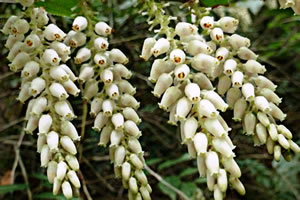
Leucothoe fontanesiana 'Rollissonii'
Leucothoe fontanesiana 'Rollissonii' is commonly known as dog hobble 'Rollissonii' is a small evergreen shrub growing upto 1.5 meters tall and a spread of 2 meters.
It is has leathery leaves of 10cm long and 2cm wide with white drooping bell shaped flowers. Best grown in partial shaded flower beds or boarders, ideal for inner city court yards
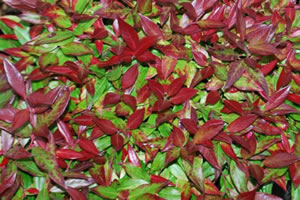
Leucothoe fontanesiana 'Scarletta'
Leucothoe fontanesiana 'Scarletta' is commonly known as dog hobble 'Scarletta' is a small evergreen or deciduous shrub growing upto 1.5 meters tall and a spread of 2 meters.
It is has leathery leaves of 10cm long and 2cm wide which when young in the spring are olive green, in the autumn some leaves will turn scarlet red and bronze. In the winter you get a lovely blend of the 3 colours until the spring. It blooms small white flowers in late spring / early spring. Best grown in partial shaded flower beds or boarders, ideal for inner city court yards
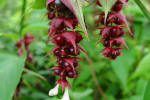
Lecesteria - Pheasant Berry
Lecesteria - Pheasant Berry is a vigorous deciduous shrub with good foliage.
It is mainly grown for the drooping deep crimson flower bracts and berries which develop in the summer and last throughout autumn.
It is very vigorous and needs to be Cut back hard in early spring each year and can be lightly pruned throughout the year to keep the shape.
Propagate by seed and softwood cuttings and it is generally pest and disease free.
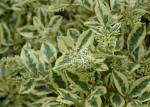
Ligustrum Golden Privet
Not only for hedges but also one or two that have good variegated foliage and very sweetly scented flowers.
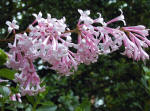
Common Lilac
As the many hybrids of the Common Lilac became stronger through better hybridization techniques, it was soon realized that they could grow on their own roots – rather than being grafted to rootstocks. This means the end of the suckering problem which did much to prevent its wider popularity and use.
Lithodora - Blue shrub
Deep blue flowers on this ground hugging shrub. Evergreen and generally hardy..
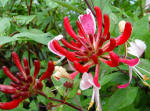
Lonicera - Honeysuckle
Normally showy climbers with scented flowers, but also a few shrubby varieties available. Not always reliable flowering - but that is normally because of wrongful pruning of some types.

Winter Flowering Lonicera
Winter Flowering Lonicera fragrantissima and L. x purpussii Winter Beauty
Lupinus chammisonis
There is the tree lupin and also a few shrubby Lupins that are hardy and well worth growing.
